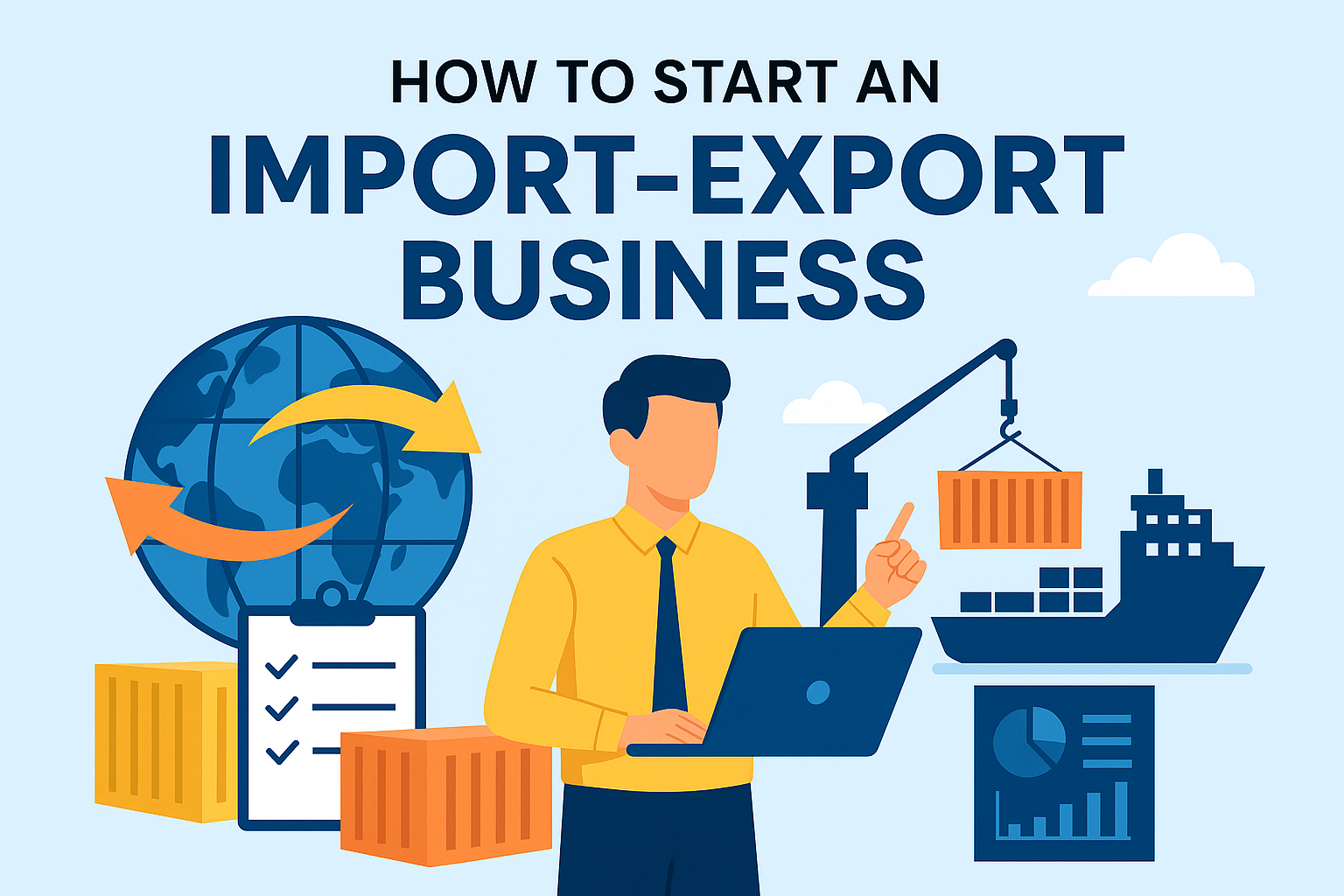
How to Start an Import-Export Business: A Beginner’s Guide
Introduction
In today’s globalized world, the import-export business offers enormous opportunities for entrepreneurs to grow beyond local markets. Whether you’re interested in exporting Indian products abroad or importing global goods into India, starting an import-export business can be both profitable and exciting. If you’re a beginner wondering how to get started—this guide is for you.
Step 1: Understand the Basics of Import-Export
Before diving in, it’s essential to understand what import-export really means:
-
Importing means bringing goods or services into your country from abroad.
-
Exporting means sending goods or services from your country to another.
This business requires knowledge of international trade laws, documentation, pricing, and logistics.
Step 2: Choose Your Product Wisely
Success in this business begins with selecting the right product. Look for:
-
Products in high demand internationally (like Indian handicrafts, spices, eco-friendly items)
-
Goods that are unique to your region
-
Items with good profit margins
Do proper market research to identify your niche.
Step 3: Register Your Business
To start legally, you’ll need to:
-
Register your business name (as a sole proprietorship, partnership, or private limited company)
-
Get a PAN card for your business
-
Open a current account in your business name
-
Register for GST (if applicable)
Step 4: Obtain Import Export Code (IEC)
An IEC code issued by the Directorate General of Foreign Trade (DGFT) is mandatory for any import-export business in India. It’s a simple, one-time registration process done online.
Step 5: Find Reliable Suppliers or Buyers
-
Attend trade fairs or exhibitions
-
Use online platforms like Alibaba, IndiaMART, or Global Sources
-
Join export promotion councils and chambers of commerce
Establishing trust and communication with suppliers and buyers is crucial for long-term success.
Step 6: Understand Shipping & Logistics
You must decide on:
-
Mode of transport (Air, Sea, or Road)
-
Incoterms (International Commercial Terms) like FOB, CIF, etc.
-
Hiring a Customs House Agent (CHA) for smooth clearance of goods
Choose a reliable freight forwarder to handle documentation and shipping.
Step 7: Know the Legal & Documentation Requirements
Key documents required include:
-
Commercial Invoice
-
Packing List
-
Bill of Lading/Airway Bill
-
Certificate of Origin
-
Insurance Certificate
-
Letter of Credit or Payment Terms Agreement
Ensure compliance with both Indian and international trade regulations.
Step 8: Plan Your Payment Method
Safe and common payment options include:
-
Advance payment
-
Letter of Credit (LC)
-
Document Against Payment (D/P)
-
Open account (for trusted buyers)
Choose a method that balances security and convenience.
Step 9: Promote Your Business Globally
-
Build a professional website (like Garudaa Exim)
-
List your products on B2B marketplaces
-
Use LinkedIn and other social media platforms to connect with global buyers
-
Offer samples or low MOQs initially to build trust
Conclusion
Starting an import-export business may seem complex at first, but with the right guidance and planning, it can be a highly rewarding venture. Focus on quality, build strong relationships, and stay updated with market trends and policies.
If you’re passionate about global trade, the world is your marketplace.


